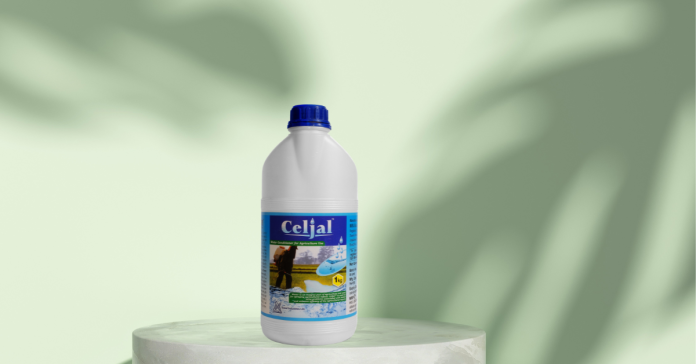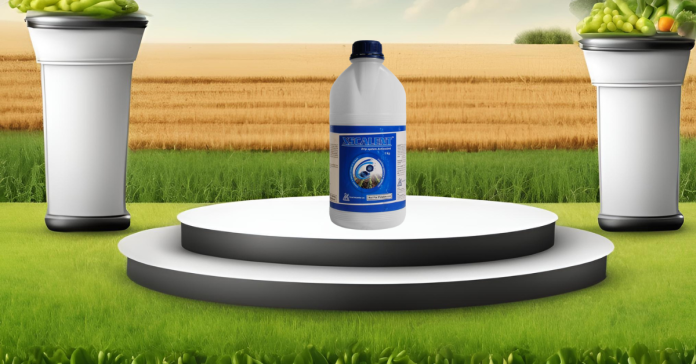Excel Industries Bioculum FAQs Part 4
Excel Industries Bioculum FAQs Part 3
Excel Industries Bioculum FAQs Part 2
Excel Industries Bioculum FAQs Part 1
Bioculum – Fast Composting Culture for Organic Waste
Q: What is Bioculum?
A: Bioculum is a composting culture in powder form.
Q: How does Bioculum work?
A: When mixed with organic waste and moisture, Bioculum activates microbes that decompose waste aerobically, releasing CO₂, absorbing nitrogen, and increasing the temperature by 35–40°C. This accelerates composting.
Q: What is the composition of Bioculum?
A: It consists of a consortium of microbes mounted on a powder substrate with food and moisture to support their growth.
Q: What are the benefits of Bioculum?
A: Bioculum is ready-to-use, kills weed seeds and insect larvae during composting, and completes the process in 30–35 days.
Q: How to prepare Bioculum slurry?
A: Mix Bioculum in water and stir well.
Q: Can Bioculum be used directly on agricultural waste?
A: Yes, Bioculum can be directly applied to agricultural waste.
Q: How many days after using Bioculum can we see results?
A: Composting takes 30–35 days. Maintain 40% moisture and turn the heap periodically for uniform results.
Q: How often should the heap be turned?
A: Once every week.
Q: What is the shelf life of Bioculum?
A: 1 year.
Q: How is Bioculum different from other decomposers?
A: It is ready-to-use, fast-acting, and easy to apply. If used as slurry, microbes activate within 10 minutes.
Celjal – The Smart Water Conditioner for Crop Protection
Q: What is Celjal?
A: Celjal is a water conditioner designed to enhance the effectiveness of chemicals delivered through foliar application, such as insecticides, fungicides, herbicides, and soluble fertilizers.
Q: How does Celjal work?
A: Celjal controls dissolved solids in water, preventing them from reacting with crop protection chemicals. This eliminates chemical loss and ensures maximum effectiveness.
Q: Can Celjal increase the efficiency of agri inputs?
A: Yes. Celjal should be added to water before any chemicals. Within 2 minutes, it conditions the water, ensuring chemicals remain fully effective.
Q: What is the recommended dosage of Celjal?
A: 1 ml per liter of water, or 1 kg for 1000 liters of water. This ensures optimal conditioning for foliar sprays.
Q: What is the shelf life of Celjal?
A: As per the label, the shelf life is 2 years. However, when sealed properly, it remains effective for much longer.
Q: Is Celjal compatible with all agri inputs?
A: Yes. Celjal is compatible with all agri inputs.
Q: Does Celjal also work as a spreader?
A: To some extent, yes. Work is ongoing to further enhance its spreading properties.
Q: How to use Celjal?
A: First mix Celjal with water, stir for a minute, and then add the chemicals. This ensures proper conditioning and prevents unwanted reactions.
Q: Is Celjal safe for humans and crops?
A: Yes. Celjal is non-toxic, safe for crops, and safe on skin. However, it should not be used for drinking water.
Q: How do I use Celjal?
A: Add Celjal to water first, stir, and then add agrochemicals. This ensures better performance and maximum efficiency.
Xscalent – The Smart Solution for Clean Drip Systems
Q: What is Xscalent?
A: Xscalent is a mixture of chelating agents designed to dissolve scale build-up in drip irrigation systems, ensuring optimal flow and efficiency.
Q: How does Xscalent work?
A: Unlike mineral acids that react with scales, Xscalent makes them soluble in water. It takes around 72 hours to clear the build-up effectively.
Q: What happens to the scales after using Xscalent?
A: The dissolved scales are flushed out through dripper nozzles. These minerals become available to crops as chelated calcium and magnesium, improving nutrition.
Q: Is Xscalent compatible with all agri inputs?
A: Yes, it is fully compatible with all agricultural inputs.
Q: What is the shelf life of Xscalent?
A: As per the label, the shelf life is 2 years. However, if stored sealed, it remains effective much longer.
Q: Any special storage requirements?
A: Yes, Xscalent should be stored under shade to maintain effectiveness.
Q: How to use Xscalent?
A: Dissolve 1 kg in 100 liters of water and add the mixture into the drip system via a venturi or mixture tank. Close the pump for 72 hours, then restart to ensure smooth flow.
Q: What happens to drip pipes after treatment?
A: Drip pipes get thoroughly cleaned. Regular use prevents scale build-up and prolongs system life.
Q: Any precautions to take while using Xscalent?
A: Xscalent is extremely safe for crops, humans, soil, and drip systems. Only precaution—protect your eyes from direct contact during application.
Q: Can the treated water be used for irrigation?
A: Yes. The same water can irrigate crops. It softens soil and boosts growth by supplying chelated calcium (Ca) and magnesium (Mg).
Epicel – The Powerful Nutrient Mobilizer
Q: What is Epicel?
A: Epicel is a biostimulant nutrient mobilizer that works in the soil, enhancing nutrient availability and improving plant health.
Q: How does Epicel work?
A: Epicel acts on nutrients fixed in the soil, unfixing them and making them available to crop roots for better uptake and growth.
Q: What is the composition of Epicel?
A: Epicel is based on K. Humate. Through a proprietary process, the effect of Humate is multiplied, making Epicel a strong nutrient mobilizer for better soil and crop health.
Q: Is Epicel safe for all crops?
A: Yes. Epicel is very safe. Even at three times the standard dose, no toxicity has been observed.
Q: Can Epicel be mixed with other agrochemicals?
A: Yes. Epicel is compatible and can be mixed with other agrochemicals.
Q: At what stages of plant growth is Epicel effective?
A: Epicel becomes effective once roots are established after sowing. It remains active in soil for up to 75 days, ensuring continuous nutrient supply.
Q: What are the key features of Epicel?
A: Epicel boosts both vegetative and reproductive growth, enhances root and shoot development, and improves chlorophyll levels for healthier, more productive crops.
Q: What makes Epicel unique?
A: Epicel increases field productivity by an average of 20%, improving both yield and quality, which means higher profits for farmers.
Q: How should Epicel be applied?
A: Dissolve Epicel in water and apply by soil drenching or through drip irrigation. It can also be mixed with granular fertilizers for broadcasting.
Q: Can we mix Epicel with Urea?
A: Yes. However, the mixture has a soggy consistency, so it should be handled properly during application.
Q: What is the dosage of Epicel?
A: The recommended dose is 1 kg per acre for all crops. Since it acts in soil, dosage depends on area, not crop type.
Celjal: Revolutionizing Water Conditioning for Modern Agriculture
In agriculture, efficiency and productivity are always important. Imagine a solution that conditions your water and boosts the effectiveness of your plant protection chemicals and fertilizers. That’s Celjal, a water conditioner from Excel Industries. It helps you get the most out of your agricultural inputs, ensuring your crops receive the best care. By improving the performance of these inputs, Celjal ensures that your crops receive the best possible care, leading to healthier plants and higher yields. With Celjal, you can be confident that you are maximizing the efficiency of your farming practices and supporting the growth of your crops in the most effective way.
Mode of action of Celjel product
Celjal works as a water conditioner by inhibiting dissolved solids in the water. This action ensures that the chemicals sprayed on crops, such as fertilizers and pesticides, remain effective. By preventing these dissolved solids from interfering, Celjal helps maintain the potency and efficiency of your agricultural inputs, leading to better crop protection and growth.
Benefits
- Improves Water pH: Excel Celjal adjusts the pH level of the water, creating an optimal environment for the application of plant protection chemicals. This adjustment ensures that the chemicals are more effective when sprayed on crops.
- Enhances Chemical Spreading: By improving the water’s pH, Celjal helps plant protection chemicals spread more evenly across the crop surfaces. This even distribution maximizes the coverage and effectiveness of the chemicals, ensuring better protection and nourishment for the plants.
- Boosts Input Efficacy: The application of Celjal enhances the overall efficacy of all agricultural inputs, including fertilizers and pesticides. By preventing dissolved solids from interfering with these inputs, Celjal ensures that they work at their full potential.
- Optimizes Agricultural Potential: Celjal helps farmers get the most out of their agricultural inputs. By maintaining the effectiveness of fertilizers and pesticides, it supports healthier plant growth and higher yields, ultimately optimizing the potential of your farming practices.
Crop Compatibility
Celjal is suitable for all crops, ensuring optimal growth and yield across different agricultural practices. By using Celjal, farmers can enhance the growth and health of a diverse range of crops, leading to better yields and more productive farming practices.
Dosage
To achieve the best results, it is recommended to apply a dosage of 1 ml per liter of water. This application should be carried out every 20-30 days.
Method of application
Celja should be added to the water before introducing any agricultural inputs. It is suitable for all foliar treatments. Whenever you apply chemicals such as insecticides, fungicides, herbicides, or water-soluble fertilizers via foliar sprays, ensure that Celjal is mixed into the water first. This preparation helps enhance the effectiveness of the agricultural inputs.
Compatibility with other products:
Celjal is compatible with all agricultural inputs, such as herbicides, insecticides, fungicides, bactericides, soluble fertilizer, micronutrients, plant growth promoters, biopesticides, biofertilizers, etc.
Storage and Shelf Life
- Storage: Celjal in a cool place, away from direct sunlight. Avoid storing or disposing of anything that could contaminate food, water, or feed. In case of a spill from a broken container, clean it up using clay or another suitable absorbent material.
- Shelf Life:Celjal has a shelf life of two years from the date of manufacturing.
Conclusion
Celjal from Excel Industries is a versatile and essential water conditioner for modern agriculture. By improving water pH and inhibiting dissolved solids, it enhances the effectiveness of plant protection chemicals and fertilizers, leading to healthier crops and higher yields. Its compatibility with all agricultural inputs and suitability for all crops make it an invaluable tool for farmers. Regular use of Celjal ensures optimal growth and productivity, supporting efficient and sustainable farming practices. With Celjal, you can confidently maximize the potential of your agricultural inputs and achieve the best possible results for your crops.
Xscalent : Safe solutions to standing crops through drip cleaning mechanism
Efficient water management is crucial in modern agriculture, and drip irrigation has revolutionized the way water is delivered to plants by targeting the roots directly, which minimizes waste and maximizes growth. However, even the most advanced drip irrigation systems can encounter issues like scale buildup, which clogs pipes and reduces overall efficiency. This is where Xscalent from Excel Industries comes into play. Xscalent is a groundbreaking solution specifically designed to prevent scale buildup, ensuring that your drip irrigation system remains unclogged and operates at peak efficiency, ultimately supporting healthier plant growth and more productive farming practices.
Product composition
Xscalent product is combination of Chelating Agents
Mode of action of Xscalent
Xscalent gently dissolves hard water-induced scales in drip systems, similar to how sugar dissolves in water, resulting in effective water flow. When the pump is resumed, the dissolved scales are washed out without damaging the crops.
Benefits
By incorporating Xscalent into a regular maintenance routine, farmers can ensure that drip systems remain clean and efficient, leading to healthier crops and more productive farming practices.
- Usable with Standing Crops: One of the standout features of Xscalent is its ability to be used even when crops are still in the field. This means you can maintain your drip systems without disrupting your growing plants.
- Labor-Saving: Xscalent simplifies the cleaning process, eliminating the need for labor-intensive tasks such as taping the laterals. This saves time and reduces the effort required to maintain your irrigation system.
- Prevents Dripper Blocks: Regular use of Xscalent ensures that dripper blocks are minimized or completely avoided. This helps maintain the efficiency of your drip irrigation system, ensuring consistent water delivery to your crops.
- Safe for All: Xscalent is a highly safe solution designed to clean choked drip systems. It poses no harm to humans, soil, crops, or the drip systems themselves, ensuring a safe and effective cleaning process.
Crop compatibility
Xscalent is a versatile drip solution suitable for a wide range of crops, including fruits, vegetables, and plantation crops. It can be effectively used for enhancing the growth and health of various crops such as potatoes, pomegranates, tomatoes, chilies, bananas, guavas, and ginger. Whether you are cultivating fruit-bearing plants, leafy greens, or root vegetables, Xscalent provides the Sufficient space needed to support drip irrigation systems and improve overall yield quality.
Dosage
To ensure optimal performance of your drip irrigation system, it is important to use the correct dosage of Xscalent. Here’s how to apply it effectively. Apply 2 kg of Xscalent per acre of land for faster and better results.
Method of application
- After completing the regular irrigation schedule, add 1 kg of Xscalent to the drip system for each acre of land just before shutting off the pump.
- The farmer should mix 1 kg of Xscalent in 100 liters of water and introduce this solution into the drip system using a venturi at a rate of 1 kg per acre.
- Allow the solution to remain in the pipes for 72 hours to dissolve the scale buildup. When the pump is turned back on, the dissolved scales will flow out in a chelated form near the plant roots, benefiting the crop.
Compatibility with other product
Xscalent is compatible with all agricultural inputs, including fertilizers, pesticides, herbicides, and other crop protection products. This means you can integrate Xscalent into your existing agricultural practices without worrying about adverse reactions or reduced effectiveness of other products. Its compatibility ensures that you can maintain your regular farming routines while benefiting from the enhanced efficiency and protection that Xscalent™ provides for your drip irrigation system.
Storage and Disposal
- Storage and Disposal: Store Xscalent in a cool place, away from direct sunlight. If a spill occurs from a broken container, clean it up using clay or another suitable absorbent material. Ensure that Xscalent is stored and disposed of in a way that prevents contamination of food, water, or feed.
- Shelf Life: Xscalent has a shelf life of two years from the date of manufacturing.
Conclusion
Xscalent from Excel Industries is an innovative and safe solution for maintaining the efficiency of drip irrigation systems. By preventing scale buildup, it ensures optimal water delivery directly to plant roots, promoting healthier and more productive crops. Its compatibility with all agricultural inputs and ease of use, even with standing crops, make it a valuable addition to any farming practice. Xscalent not only saves labor costs but also protects the environment and crop health.






